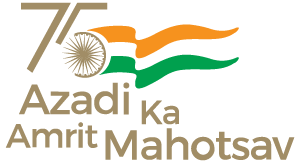NESAC is located at Umiam (Barapani) about 20 km from Shillong, Meghalaya State. Constructions of the residential complex including guest house cum training hostel are in final stage, which is about 1km from the office complex. The centre is well equipped with state of the art facilities in the areas of Remote Sensing (RS) and Geographical Information System (GIS), Disaster Management, Satellite communication and Space & Atmospheric Science Research.
Facilities
The Centre has got state-of-the art servers and workstations for geospatial analysis and digital image processing, very high-end systems for photogrammetry, hydrological modeling, etc, GIS and GNSS equipments, Echo sounder, high quality output devices, etc. The Centre has rich collection of satellite data from Indian and foreign remote sensing satellites, covering entire NER, reference maps and other ancillary data of the region. NESAC is well equipped to process data from wide varieties of platforms to enable digital image processing, geospatial analysis and location based services. Capabilities and expertise do exist from both COTS and open source software for data analysis. The Centre also has in its possession the Digital Plant Canopy Analyzer to measure leaf area index, Spectroradiometer to measure spectral reflectance at close narrower interval for creation of spectral library.
Over the years NESAC has established enhanced IT infrastructures for carrying out research and outreach activity and also to provide operational services. The Centre has a Local Area Network (LAN) with 1Gbps Ethernet backbone connecting all the laboratories, facilities as well as administrative departments. Internet connectivity is provided throughout the NESAC office building with 1Gbps OFC Link (NKN) with a redundant backup link with 10mbps bandwidth. Both NKN and ISRO Space-net connectivity are being used for video conferencing and other data streaming applications. The centre has established web hosting infrastructure with redundant servers and storage in order to provide various kinds of web services including FTP under existing project activities. The Centre is also equipped with sufficient number of workstations, printers, plotters, scanners, GPS systems, GPS-enabled digital cameras, GAGAN GPS and high end DGPS for advanced and precise ground survey applications. In addition, sufficient numbers of image processing and GIS softwares like Erdas, Geomatica, ESRI ArcGIS, eCognition, Supermap, Gama, TNTmips etc. along with other open source software and tools are available in the lab.
NESAC has setup HPC facility during 2014 with 1 master node (20 core), 6 compute nodes (72 core) with 12 TB storage (SAN). The computing facility has been upgraded with another 4 compute nodes (80 cores) with addition of 8TB storage.
NESAC has got advanced satellite communication facilities to support various developmental programs in eight states of NER. The facilities available are: SATCOM studio for content generation in various subject matter; Spacenet system for video conferencing and data transfer activities amongst DOS/ISRO centres, ISRO DMS-VPN node and satellite phones (Type-D terminals) for communication support under disaster conditions. NESAC also contributes through development of Mobile Apps as part of disaster management support. NESAC has hosted one of the four ground stations to have NAVIC/ data reception and monitoring facility on 24X7 basis as part of satellite navigation program of ISRO. The Centre also supports Ka-band propagation experiment and NAVIC SPS-GPS receiver experiment.
The Centre has a dual polarized S band Doppler Weather Radar (DWR) installed at Cherrapunjee, Meghalaya for studies in early warning of hydrometeorological disasters, convective systems, cloud and precipitation physics, etc. The centre also hosts a Multi Wavelength Radiometer (MWR), Sunphotometer, Aethalometer, Integrating Nephelometer, Electric Low Pressure Impactor (ELPI), etc for physical and optical characterization of aerosols. To study the atmospheric boundary layer Physics and dynamics, the centre has Dr. Pisharoty sonde (GPS based) launching facility with hydrogen gas filled balloons and a 32 m tower with fast response 3D sonic anemometer and other meteorological instruments at 4 levels (at the heights of 6m, 10.5m, 18m, and 30m). Online gas analyzers for Green House Gases (GHG) like Oxides of Sulphate (SOx), Oxides of Nitrogen (NOx), Carbon monoxide (CO), Ozone (O3), and Methane, non-Methane hydrocarbon are being used with necessary calibration and centralized data logging system to characterize the regional GHG and their impact on climate. A network of 118 Automatic Weather Stations (AWS) spread over entire NER was established by NESAC.
The library facility is well equipped with books, journals, magazines and other resources covering wide varieties of subjects to cater the requirements of research and applications. Necessary software facilities are also established for efficient management of the library facility. NESAC library is covered under the Antariksh Gyaan consortium of Department of Space. NESAC avails the facility of online subscription of journals, access to a e-library resources under Antariksh Gyaan.
NESAC has well equipped Gymnasium and Recreational facilities at its Residential Complex. The Gymnasium is having state of the art facilities like Treadmill, Elliptical Cross Trainer, Fitness Bike and other equipments. Badminton, Table Tennis and outdoor sports like Volley Ball and Cricket are regularly played at NESAC. Regular Staff of NESAC as well as students, trainees indulge in various sports and recreational activities. On the event of Republic Day, Independence Day and NESAC Foundation Day, various games and cultural programs are also organized by NESAC Recreation Committee for the staff of NESAC. NESAC is also setting up full-fledged Gymnasium and Recreational facilities for its upcoming Outreach Facility.
NESAC has set up state-of-the-art UAV lab facility for UAV system development and integration. The lab is equipped with different components, assembly tools required for UAV system development. The 3D printer is being used to develop in-house mini UAVs along with other accessories related to UAVs. More than 25 students from different institution such as IITs/NITs/Universities have taken up the projects (of duration ranging from 1 month – 1 year) in the field of UAV systems engineering and development at NESAC till the date.



